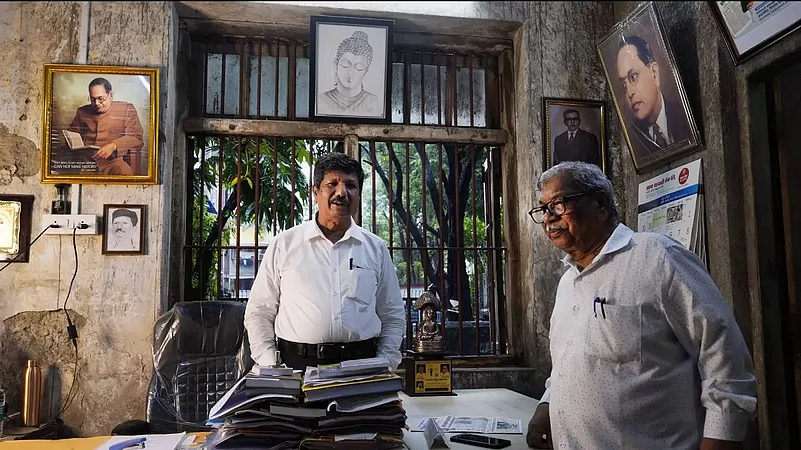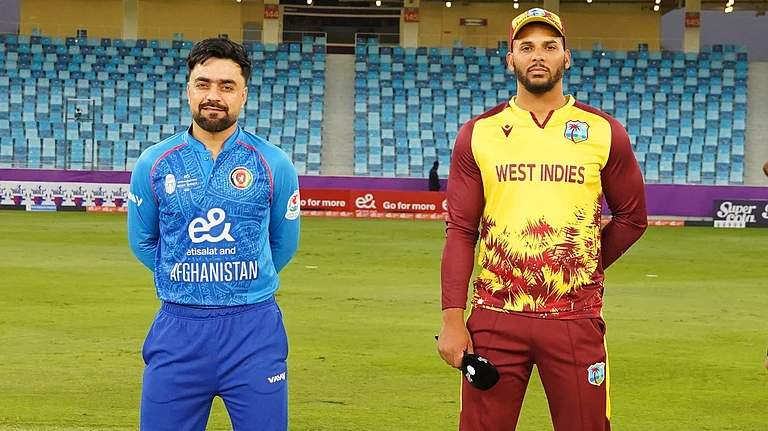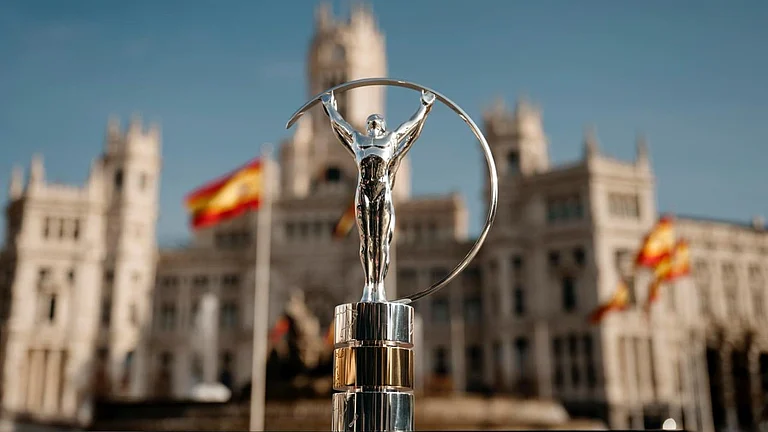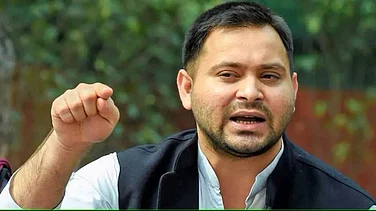JV Pawar is considered a stalwart of the Dalit movement and literature of Maharashtra. His importance can be judged from the fact that Dr Ananad Teltumbde calls him the ‘encyclopedia; of the post-Ambedkar Dalit movement, while Bhau Torsekar dubs him the ‘Google’ of this sphere. Therefore, it is definitely quite an experience just to go through a book on the history of the Dalit Panthers by such a stellar author. “Dalit Panthers: An Authoritative History,” is the translation of the original Marathi work “Dalit Panthers” (JV Pawar) by Rakshit Sonawane. This much-needed history has been published jointly by Forward Press Books and The Marginalized Publications, Delhi.
The Dalit Panthers was a revolutionary movement of the 1970s that influenced not just the Dalits of Maharashtra but the entire politics of the state. Marathi Dalit literature in its current form took birth at the heart of the movement. Before this, the word Dalit existed, but had not been made popular. The revolutionary organization was established on May 29, 1971, but did not survive for long and was dissolved just five years later on March 7, 1977.
It is very interesting to go into the details of the socio-political conditions that led to the rise of Dalit Panthers and the activities of the group. JV Pawar was among the founders of Dalit Panthers, and a chapter in his book on the group’s background reveals that the 1970s saw inhuman atrocities against the Dalits of Maharashtra. Leaders of the Republican Party of India (RPI) were involved in feuds with each other. No action was being taken against those who oppressed the Dalits and their persecution was at its peak. Incidents of Dalit women being raped and paraded naked, the social boycott of Dalits, human faeces being thrown in their water sources, members of the community being beaten or burned to death, their houses being burned down, and the lower castes not being allowed to cremate their dead in the common cremation ground was on the rise. This was filling the Dalits with a sense of deep anger and resentment.
On April 14, 1972, the local Savarnas complained to the police about the noise from a loudspeaker being used by residents of the Dalit settlement in Mumbai’s Chinchwadi (Bandra) to celebrate the birth anniversary of Dr Ambedkar. This gave the police a pretext to attack the Dalits. A police team led by PSI Nanaware not just beat up the Dalits after reaching the spot but also tore down photos of Dr Ambedkar and Buddha. This news spread like wildfire across Mumbai. Soon, a large number of people gathered at the police station in Bandra to protest. Dalits protested throughout Mumbai. On Apr. 16, Dr Ambedkar’s son Bhaiyasaheb Ambedkar led a protest in front of the Mantralaya (secretariat). The protesters were demanding a probe into the Bandra incident and the suspension of the police officer responsible. Barrister BD Kamble and Bhausaheb Kelshikar also led a separate protest march. Leaders of both protests submitted a memorandum to Minister DT Rupwate. However, according to JV Pawar, no action was taken.
He further writes that at the time, the RPI had been divided into several factions. No matter what the immediate reason, the greed for power was at the centre of this division. Speaking on April 14, 1972, on the occasion of Ambedkar’s anniversary at Mumbai’s Chaityabhumi, he said that some RPI leaders could not be stopped from leaving the party and joining the congress due to their hunger for power.
Around the same time, Shivsena MLA Wamanrao Mahadik organized a meeting on the Bandra incident, attended by Manohar Joshi and Dr Chamanlal Bali, the husband of actor Vyjayanthimala. RPI was severely criticized during the meeting, something which left a deep impression on some Dalit youths who were Shiv Sena supporters. They established a “Bhim Sena” in Mumbai’s Kamathipura, mirroring the Shiv Sena. The group’s first meeting was held in the Padmashali community hall and was attended by notable figures such as Shantaram Adhangale, Kamlesh Santoji Gaikwad, Narayan Gaikwad, Sitaram Misal, BR Kamble, Vishnu Gaikwad, BS Asware, SR Jadhav and TD Yadav. They agreed on the name, but an eponymous organization already existed in Hyderabad. Finally, the name “Republican Kranti Dal” (Republican Revolutionary Party) was agreed upon, as a rejoinder to the Dalit leaders of the RPI. The author says that even this organization was unable to fulfil its aim of stopping Dalits from joining Shiv Sena. Therefore, its name was again changed to ‘Republican Ekya Kranti Dal’ (Republican Unity Revolutionary Party). However, some leaders of even this new group veered off its aims due to their greed.
According to the author, this was the time when Dailt writers started meeting in Dadar for discussions. These meetings were held at the Irani restaurant in Dadar and were attended by figures such as Daya Pawar, Arjun Dangle, Namdeo Dhasal, Prahlad Chendwankar and JV Pawar himself. This was the era of a growing autocracy led by Indira Gandhi, hooliganism by Congress leaders and rising atrocities against Dalits. Groups like Yuvak Kranti Dal, Republican Kranti Dal, Yuvak Aghadi, Samajwadi Yuvak Sabha and Muslim Satyashodhak Samiti were formed in this backdrop.
The formation of Dalit Panthers
The Elayaperumal committee report also played a key role in the formation of the Dalit Panthers. JV Pawar says that a committee was established in 1965 with MP L Elayaperumal as its chair to study the atrocities against Dalit cases across the nation and suggest ways to stop them. The committee analyzed around 11,000 cases of abuses against Dalits and submitted its report to the government on Jan. 30, 1970. The committee found that the Indira government had completely failed to deliver justice to the Dalits, but the government showed no interest in tabling the report in the house.
This was because perpetrators of the crimes against Dalits were mainly Congressmen, both Brahmins and non-Brahmins. But this report lit a fire for social change in the youth. Although the divided Republican leaders remained silent on the issue, the young writers and poets wanted the government to act on the report. In one of their regular meetings at the Irani cafe, the group of Dalit writers decided to issue a public statement warning the government on the Elayaperumal committee report. The statement was signed by 12 Dalit authors. However, Baburao Bagul refused to sign, while Daya Pawar was bound by service rules due to being a government servant. JV Pawar writes he found Prahlad Chendwankar to be of shifty nature and not trustworthy. Finally, the declaration was issued to the press with the signatures of Raja Dhale, Namdeo Dhasal, Arjun Dangle, Bhimrao Shirvale, Umakant Randhir, Gangadhar Pantawane, Waman Nimbalkar, Moreshwar Vahane and JV Pawar. The author reveals that the lines that made Baburao Bagul and Daya Pawar apprehensive about signing the statement were: “If the government is unable to prevent injustice and atrocities towards Dalits, we will take the law into our own hands.” They refused to sign fearing that the police would find out that such a statement had been issued by authors and arrest them.
Just then, two more incidents of atrocities against Dalits took place in Maharashtra. In Pune’s Bavda village, the entire Dalit population faced a social boycott orchestrated by Shahjirao Patil, the brother of state minister Shankarrao Patil. The second incident took place in the Brahmangaon of Parbhani district, where a Dalit woman was stripped and paraded while being beaten with the thorny branches of the babool tree. These incidents were widely condemned by various organizations. On May 28, leaders of the Yuvak Aghadi group met Maharashtra Chief Minister Vasantrao Naik and submitted a letter demanding a judicial enquiry into the incidents and severe punishment for the culprits. Instead, the CM advised the leaders to carry out their own probe and submit a report to the government, but they rejected this saying it was not their job, and that the government should use its machinery and intelligence agencies for this purpose. The government did not take any action.
Dhasal and JV Pawar lived in the same area: Dhasal in Dhor Chawl and Pawar in the municipal quarters in Siddharth Nagar. This meant that they met almost daily. One day, while returning from Siddharth Vihar, they developed the idea of running an underground movement to stop atrocities against Dalits. Their plan was to immediately visit the site of the crime and deal with the culprits. However, there were many roadblocks ahead. They knew that society would not condone such a movement and it could affect them adversely. Thus, after a lot of deliberation, they gave up the idea. JV Pawar says that he was a MA student but gave up his studies to join the Ambedkarite movement.
On May 29, 1972, Dhasal and JV Pawar were discussing the possibility of forming a militant group against the oppression of Dalits while walking on the Vitthalbhai Patel road, passing through Alankar Cinema and close to the Opera House. They discussed several names for the organization but were unable to reach a consensus. Finally, the debate stopped with “Dalit Panthers.” Thus, the revolutionary group Dalit Panthers was formed during a walk on a Mumbai road. Pawar insists that even though many people have claimed to be founders of the Dalit Panthers, the truth is that it was the brainchild of just him and Namdeo Dhasal.
The next step was to make Dalit Panthers public. As Dhasal was involved with the socialist movement, he knew a lot of people. Socialist activists had an office on the Raja Ram Mohan Roy Road, where poet Ramesh Samarth worked as a typist. Dhasal asked him to type the press release announcing the formation of the Dalit Panthers, The first signature on the document was that of Dhasal, followed by JV Pawar. Subsequently, many others signed it, notably Raja Dhale, Arun Kamble, Dayanand Mhaske, Ramdas Athawale and Avinash Mahatekar. The press release declared:
“The casteist Hindus of Maharashtra do not fear the law. These Savarna Hindus, connected to rich farmers and the state, are involved in heinous crimes against the Dalits. In order to straighten these inhuman casteists, the revolutionary youths of Mumbai established a new organization, the Dalit Panthers. JV Pawar, Namdeo Dhasal, Arjun Dangle, Vijay Girkar, Prahlad Chendwankar, Ramdas Sorte, Maruti Sorte, Kondiram Thorat, Uttam Kharat and Arjun Kasbe have together organized several meetings in Mumbai to form the group, and we have received widespread support.”
The decline of Dalit Panthers
JV Pawar writes that the Dalit Panthers emerged as a powerful force across Maharashtra. While the government was threatened by it, the common folk found protection and relief in the group, they could get rid of their fear thanks to it. The stature of the group’s leaders began growing within the districts, which led to them getting close to district collectors, police chiefs, officials and elected representatives. This resulted in them becoming intermediaries between people and officials for various tasks.
The author says that even though Dalit Panthers emerged as an entity to stop injustice and atrocities, this new trend resulted in some block or district-level presidents of the group themselves metting injustice towards Dalits. Initially, the Dalit Panthers would intervene in cases of land grabs and return the land to its owners, but now they started getting involved in deals for these lands. At first, they would visit slums to provide security to the victims, but now some Dalit Panthers became slum lords, constructing new shacks and selling them off. Observing these tendencies, Pawar and his comrades realized that the Panthers’ image as protectors of the powerless was changing. Things deteriorated to the extent that some members started imposing levies on liquor smugglers and they got involved in illegal businesses. This led to popular discontent against the Panthers.
Pawar said that even though such activities were not widespread and remained exceptions, they suggested that the organization had become a refuge for illicit acts. One or two complaints of this kind would be received from almost every district. Therefore, on Jan. 10, 1976, Pawar raised the issue in a public meeting, saying he would not compromise with Dr Ambedkar’s political philosophy, even at the cost of the organization. This was a pointer to the future of Dalit Panthers.
The author also highlights the political circumstances that played a role in the group’s decline. This was the time when all opposition parties had joined hands to form the Janata Party against the Congress, and general elections had been announced. Pawar says that the Jana Sangh was the major component of the Janata Party, and was leaving no stone unturned to defeat the Congress. Pawar found out that Raja Dhale had been given a Lok Sabha ticket from Nanded by the Janata Party. Dhale ended up comparing the Janata Party leaders jailed during the emergency with Lord Krishna being born in a prison.
Pawar says that even though the Congress was their enemy, he did not want to help the Janata Party in its tussle with the government. Simultaneously, Bhaiyasaheb Ambedkar was contesting the Lok Sabha election on the promise of ensuring reservations for Buddhists. However, he was deserted by all his comrades. He was the sole voice fighting for the Buddhists, while the entire nation was out for ousting Congress from power.
While JV Pawar backed Bhaiyasaheb Ambedkar, Namdeo Dhasal was using the Dalit Panthers banner to campaign for the Congress. On the other hand, Bhai Sangare and Avinash Mahatekar were campaigning for the Janata Party. Thus, the Dalit Panthers had been divided into three factions. Pawar says that under these circumstances, they decided to dissolve the Dalit Panthers. Bhaiyasaheb Ambedkar backed this decision. Later, a booklet was prepared to formally announce the move. The booklet was written in Ramdas Athawale’s room in the Siddharth Vihar hostel, Vadala. The room had been locked from the outside to prevent anyone from barging in. Just three people remained inside: Raja Dhale, Umakant Randhir and JV Pawar. Athawale was sent away to play football, even though he and Arun Kamble knew what was going on in the room. Dhale dictated and Randhir wrote, while Pawar corrected or changed the words if needed. The booklet was printed by Raja Dhale at the Buddha and Bhushan Printing Press in Dadar’s Gokuldas Pasta Road.
On March 7, 1977, the booklet was distributed to journalists, and the Dalit Panthers were formally dissolved. Aurangabad’s Gangadhar Gade was also present in the press conference and answered a couple of questions by the journalists. Later, some people established their own group ‘Apan Mass Panthers,’ to take advantage of the name, but it did not gain traction.





















